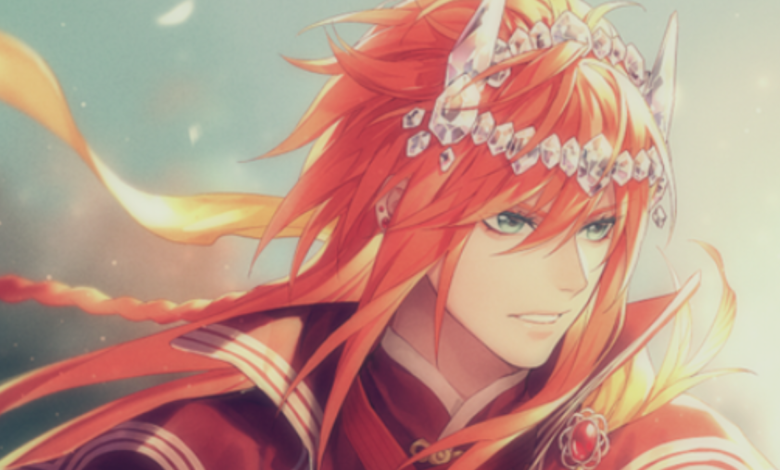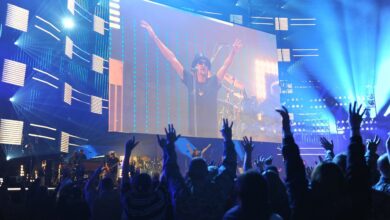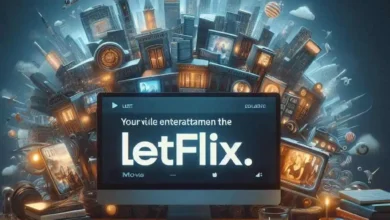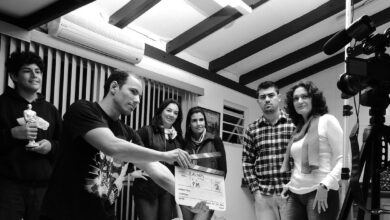The Disowned Child: Chronicles of Unleashed Divine Bloodlust

Theme of the disowned child: Chronicles of Unleashed Divine Bloodlust, combined with the concept of unleashed divine bloodlust, offers a powerful narrative that resonates deeply with readers. This blend of rejection and overwhelming rage creates a compelling story that explores themes of identity, vengeance, and redemption. In this article, we will thoroughly examine these elements, their historical and psychological underpinnings, and their portrayal in modern literature, focusing on how they contribute to the narrative of the disowned child: Chronicles of Unleashed Divine Bloodlust.
What is a Disowned Child?
A disowned child is someone who has been rejected by their family, often facing severe emotional and psychological challenges as a result. This rejection can manifest in various forms, such as being cast out of the family home, being denied emotional support, or being erased from familial ties. The disowned child’s experience is characterized by a profound sense of abandonment and alienation, which can lead to significant personal and social difficulties.
Definition and Implications of Divine Bloodlust
Divine bloodlust refers to an intense and often uncontrollable rage believed to be inspired or bestowed by a higher power or divine entity. This form of rage is not merely a personal emotion but is seen as a force with cosmic significance, driving the individual towards acts of vengeance or justice. In literature and mythology, divine bloodlust often serves as a catalyst for major events and conflicts, propelling characters into epic struggles and transformations.
Historical and Mythological Context
Divine Bloodlust in Mythologies
Divine bloodlust has been a recurring motif in various mythologies around the world. For instance, in Greek mythology, Ares, the god of war, embodies bloodlust and fury, influencing battles and conflicts. Similarly, in Norse mythology, Odin’s quest for vengeance and Thor’s rage against his enemies reflect the destructive power of divine wrath. These mythological depictions illustrate the ancient understanding of divine bloodlust as a potent and uncontrollable force that shapes the fate of both gods and mortals.
Historical Examples of Disowned Children in Literature
Literary history is rich with examples of disowned children who undergo dramatic transformations. Shakespeare’s “King Lear” presents Edgar, who is disinherited by his father and must navigate a treacherous path to reclaim his honour and restore justice. Similarly, in “Othello,” the protagonist faces social rejection and personal betrayal, which fuels his tragic downfall. These examples demonstrate how literature has long explored the theme of disownment and its profound effects on character development and narrative progression.
The Psychological Impact on the Disowned Child
Emotional Trauma and Psychological Effects
The emotional trauma experienced by disowned children can be deep and multifaceted. The sense of rejection often leads to feelings of worthlessness, depression, and anxiety. These emotional states can profoundly affect their mental health and behaviour, influencing their relationships, self-perception, and life choices. The psychological impact of being disowned can also lead to a heightened sense of anger and a desire for revenge, which are often explored in narratives involving divine bloodlust.
The Role of Rejection in Shaping Identity
Rejection by one’s family can significantly impact identity formation. Disowned children may struggle with self-esteem and self-worth, questioning their place in the world and their value as individuals. This struggle can lead to a powerful drive for validation or vengeance, manifesting as divine bloodlust in literature. The search for identity and meaning in the face of rejection often drives the character’s journey and shapes their ultimate fate.
Narrative Elements in The disowned child: Chronicles of Unleashed Divine Bloodlust
In the disowned child: Chronicles of Unleashed Divine Bloodlust, the key characters include the disowned protagonist, their family members, and the divine entities that influence the narrative. The protagonist, often an outcast or rejected figure, becomes the central focus of the story, navigating their path from rejection to vengeance. Supporting characters, including family members and divine beings, play crucial roles in shaping the protagonist’s journey and the unfolding conflicts.
Plot Summary and Key Themes
The plot of “Chronicles of Unleashed Divine Bloodlust” centres on the protagonist’s transformation from a rejected child to a figure driven by divine rage. The story explores themes of vengeance, redemption, and personal growth as the protagonist grapples with their anger and seeks justice or revenge. Key themes include the struggle for acceptance, the quest for power, and the impact of divine intervention on human affairs.
Exploring Divine Bloodlust in Fiction
How Divine Bloodlust is Portrayed in Modern Literature
In modern literature, divine bloodlust is often depicted as a complex and multifaceted force. Characters may experience their rage in various ways, from supernatural battles to internal conflicts. This portrayal adds depth to the narrative and highlights the character’s emotional and psychological struggles. The depiction of divine bloodlust often serves to explore broader themes of power, justice, and personal transformation.
Case Studies from Popular Books and Media
Several popular books and media have explored themes of divine bloodlust and rejection. For example, in “The Hunger Games” series by Suzanne Collins, Katniss Everdeen’s journey involves elements of divine rage and vengeance as she fights against a tyrannical regime. Similarly, in “Game of Thrones” by George R.R. Martin, characters like Daenerys Targaryen exhibit signs of divine rage and ambition as they seek to reclaim their power. These case studies demonstrate the versatility of the theme and its resonance with contemporary audiences.
Symbolism and Allegory
Symbolic Representations of Bloodlust and Rejection
In literature, bloodlust often symbolises uncontrollable rage and a quest for justice or vengeance. It represents a primal force that drives characters to extreme actions. Rejection, on the other hand, symbolises a deep-seated fear of inadequacy and loss. Together, these symbols create a powerful narrative framework that explores the consequences of divine intervention and personal rage.
Allegorical Meanings in the Narrative
Allegories in “Chronicles of Unleashed Divine Bloodlust” may represent broader themes such as the struggle between good and evil, the quest for personal redemption, and the consequences of unchecked rage. These allegorical elements enrich the narrative, providing deeper insights into the human condition and the impact of divine forces on individual lives.
Comparative Analysis
Comparison with Other Literary Works Featuring Disowned Children
Comparing the disowned child: Chronicles of Unleashed Divine Bloodlust with other literary works featuring disowned children reveals both similarities and differences in the portrayal of rejection and rage. While themes of abandonment and divine vengeance are common, the specific ways in which these themes are explored can vary, offering unique insights into the narrative’s impact and significance.
Contrasts Between Divine Bloodlust and Other Forms of Rage
Divine bloodlust differs from other forms of rage in its perceived connection to higher powers and its often supernatural manifestations. While other forms of rage may be rooted in personal grievances or social injustices, divine bloodlust is often depicted as a cosmic force with far-reaching consequences. This contrast highlights the unique nature of divine rage and its role in shaping the narrative.
Character Development and Transformation
How Disowned Children Evolve in the Story
The disowned child: Chronicles of Unleashed Divine Bloodlust undergo significant transformations as they navigate their journey from rejection to divine rage. Their evolution often involves confronting their past, harnessing their newfound power, and seeking redemption or revenge. This character development is central to the narrative, shaping the protagonist’s ultimate fate and resolution.
The Role of Bloodlust in Character Growth
Bloodlust serves as both a driving force and a catalyst for character growth. It challenges the protagonist to confront their past, grapple with their emotions, and seek justice or vengeance. The transformation driven by bloodlust often leads to significant personal growth, as characters learn to harness their rage and achieve their goals.
Thematic Significance
Themes of Redemption and Revenge
Themes of redemption and revenge are central to The disowned child: Chronicles of Unleashed Divine Bloodlust. The protagonist’s journey involves balancing their desire for vengeance with the quest for personal redemption. This exploration of themes highlights the moral and emotional complexities of seeking justice and forgiveness.
The Influence of Bloodlust on the Narrative Arc
Bloodlust influences the narrative arc by creating tension, conflict, and dramatic turns. It drives the plot forward, affecting character decisions and shaping the story’s resolution. The impact of divine bloodlust on the narrative adds depth and intensity to the story, enriching the reader’s experience.
Cultural Impact and Reception
How “Chronicles of Unleashed Divine Bloodlust” Has Been Received by Audiences
Reception of the disowned child: Chronicles of Unleashed Divine Bloodlust reflects its impact on readers and critics. Audience reactions highlight the book’s emotional depth, complex characters, and engaging narrative. The story’s exploration of divine bloodlust and rejection resonates with readers, offering a compelling and thought-provoking experience.
Cultural Reflections on the Themes of the Book
The themes of divine bloodlust and rejection reflect broader cultural and societal issues. They offer insights into personal struggle, the quest for acceptance, and the consequences of divine intervention. These cultural reflections enrich the reader’s understanding of the narrative and its relevance to contemporary issues.
Author’s Perspective
Insights into the Author’s Intentions
Understanding the author’s intentions provides valuable context for interpreting “Chronicles of Unleashed Divine Bloodlust.” Interviews, quotes, and insights from the author reveal their vision for the story, including their exploration of divine rage and rejection. These perspectives enhance the reader’s appreciation of the narrative’s themes and execution.
Interviews and Quotes from the Author
Interviews and quotes from the author offer a deeper understanding of their creative process and thematic focus. By exploring the author’s thoughts and motivations, readers can gain a richer appreciation of the narrative and its significance.
Critical Analysis The disowned child: Chronicles of Unleashed Divine Bloodlust
Scholarly reviews and criticisms of The disowned child: Chronicles of Unleashed Divine Bloodlust provide an academic perspective on the book’s themes, characters, and narrative structure. These analyses offer insights into the book’s place in contemporary literature and its contribution to the exploration of divine bloodlust and disownment.
The Book’s Place in Contemporary Literature
The book’s place in contemporary literature reflects its impact and significance within the genre. Its exploration of divine bloodlust and rejection positions it as a notable work that contributes to ongoing discussions about personal rage, redemption, and the influence of divine forces.
Conclusion
The disowned child: Chronicles of Unleashed Divine Bloodlust, the themes of disownment and divine rage are intricately woven into a compelling narrative that explores deep psychological and emotional landscapes. The story’s portrayal of rejection and bloodlust offers a powerful examination of personal struggle, vengeance, and redemption. By delving into these themes, the book provides readers with a rich and thought-provoking experience that resonates on both personal and universal levels.
FAQs About The Disowned Child: Chronicles of Unleashed Divine Bloodlust
What inspired the concept of divine bloodlust?
The concept of divine bloodlust is inspired by ancient mythologies and religious texts that depict intense, often destructive rage as a force controlled or bestowed by higher powers. This idea has been adapted and explored in various literary and artistic traditions to create compelling narratives.
How does the book explore the psychology of the disowned child?
“Chronicles of Unleashed Divine Bloodlust” delves into the psychological impact of being disowned, examining the emotional trauma and identity struggles faced by the protagonist. The narrative explores how rejection shapes their behaviour and drives their quest for vengeance.
What are the major themes in “Chronicles of Unleashed Divine Bloodlust”?
Major themes in the book include the struggle for acceptance, the quest for revenge, and the pursuit of redemption. The narrative also explores the impact of divine bloodlust on personal growth and the moral complexities of seeking justice.
How has the book been received by critics?
The book has received acclaim for its emotional depth, complex characters, and engaging narrative. Critics have praised its exploration of divine bloodlust and rejection, noting its significance within contemporary literature.
What can readers learn from the character development in the story?
Readers can learn about the transformative power of personal rage and the quest for redemption through the character development in the story. The protagonist’s journey highlights the complexities of handling divine bloodlust and the path to self-discovery and growth.




